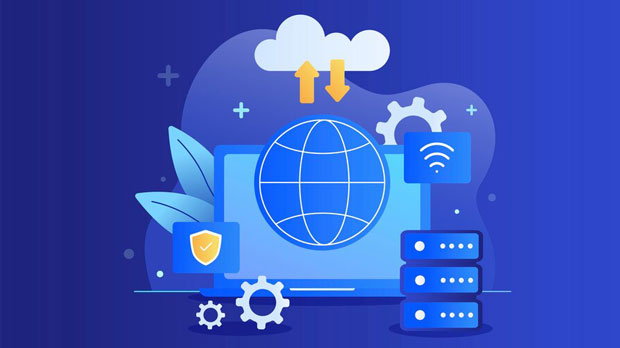In the world of network security, the use of proxies plays a crucial role in maintaining privacy and anonymity. sock s5 proxies, in particular, are known for their versatility and ability to handle various types of internet traffic. However, when choosing a proxy service, the security of the system becomes paramount. In this article, we will conduct a comprehensive security analysis between two popular proxy solutions in a SOCKS5 environment: PYPROXY and Proxy Croxy. We will explore their features, vulnerabilities, and the potential risks that users need to be aware of, ultimately providing insights on how to make an informed choice for secure proxy usage. Understanding socks5 proxyBefore delving into a detailed comparison, it’s essential to understand the SOCKS5 protocol. SOCKS5 is a versatile proxy protocol that allows for the routing of various types of internet traffic, including HTTP, FTP, and others. Unlike HTTP proxies, which only handle web traffic, SOCKS5 proxies are capable of handling any kind of internet data, making them ideal for use in various applications like web browsing, file sharing, and gaming. Additionally, SOCKS5 supports enhanced security features, such as authentication and encryption, which are critical for protecting users' privacy.PyProxy: Overview and Security FeaturesPyProxy is an open-source SOCKS5 proxy tool written in Python. It offers a flexible solution for users who want to configure their own proxy server and customize it according to their specific needs. PyProxy supports both IPv4 and IPv6, and its ability to work with SOCKS5 makes it an attractive option for those seeking to route internet traffic through a secure and anonymous server.In terms of security, PyProxy boasts several key features:1. Encryption Support: PyProxy supports encrypted traffic, ensuring that the data sent through the proxy remains protected from potential interceptors.2. Authentication: PyProxy allows for user authentication, adding an extra layer of security by ensuring that only authorized users can access the proxy.3. Customization: PyProxy’s open-source nature means that it can be customized to meet the specific security needs of users, such as implementing additional encryption protocols or filtering malicious traffic.However, PyProxy’s open-source nature also introduces potential security risks. The codebase, being publicly available, may be vulnerable to exploitation if not regularly updated or audited. Additionally, improper configuration of the proxy server could lead to security breaches, such as leaks of sensitive data.Proxy Croxy: Overview and Security FeaturesProxy Croxy, on the other hand, is a commercial proxy service that operates in a similar SOCKS5 environment. It is designed to provide a high level of anonymity and privacy, with a primary focus on maintaining secure connections. Proxy Croxy offers a number of advanced features that aim to provide users with both high speed and secure internet browsing.Key security features of Proxy Croxy include:1. Data Encryption: Proxy Croxy encrypts all data passed through its servers, ensuring that sensitive information is protected from third-party surveillance.2. No-Logs Policy: Proxy Croxy adheres to a strict no-logs policy, which ensures that no records of user activity are stored, adding an additional layer of privacy.3. Anti-DDoS Protection: The service is equipped with protection against Distributed Denial of Service (DDoS) attacks, ensuring that users can maintain uninterrupted service.4. Global Server Network: With multiple servers located worldwide, Proxy Croxy ensures a fast and reliable connection while enhancing security through geographical dispersion.Despite its robust security features, Proxy Croxy is not without its limitations. The primary concern for users is that, as a commercial service, users must trust the provider to uphold the promises of privacy and security. There is always a risk that the provider might be forced to hand over user data to authorities, especially in jurisdictions with strict data retention laws.Security Comparison: PyProxy vs Proxy CroxyWhen comparing PyProxy and Proxy Croxy in terms of security, several critical factors come into play:1. Privacy and Anonymity: Both solutions offer strong encryption, but Proxy Croxy’s no-logs policy gives it an edge in terms of privacy. PyProxy, being open-source, may allow users to implement custom privacy measures, but it lacks the formal guarantee of anonymity that comes with a no-logs policy. 2. Encryption and Data Protection: Both PyProxy and Proxy Croxy support encryption, ensuring that data remains secure during transmission. However, Proxy Croxy offers a more comprehensive solution, with built-in encryption and the added benefit of automatic configuration for optimal security. In contrast, PyProxy requires manual configuration and may be more prone to errors if not set up correctly. 3. Ease of Use and Configuration: Proxy Croxy is a commercial product that is designed to be user-friendly, requiring minimal configuration. It is optimized for security out of the box. PyProxy, being open-source, may require more technical knowledge to set up and secure properly, which can be a challenge for non-technical users. 4. Risk of Vulnerabilities: The open-source nature of PyProxy can be both a strength and a weakness. While it offers the flexibility to add custom features, it also means that vulnerabilities may go unnoticed if the community or individual user does not conduct regular security audits. Proxy Croxy, as a commercial solution, is subject to professional maintenance and regular security updates, reducing the risk of known vulnerabilities.Potential Risks in a SOCKS5 EnvironmentWhile both PyProxy and Proxy Croxy provide robust security features, using them within a SOCKS5 environment introduces its own set of risks. Some potential issues include:1. IP Leaks: Improper configuration of either proxy can result in IP address leaks, undermining the anonymity provided by the SOCKS5 proxy.2. Man-in-the-Middle Attacks: If either service is not configured to use secure encryption, it could be vulnerable to man-in-the-middle (MITM) attacks, where an attacker intercepts and potentially alters communications.3. Data Retention: Although PyProxy offers customization to prevent logging, users may still unknowingly expose their data to third-party servers if not properly configured. On the other hand, while Proxy Croxy offers a no-logs policy, users must trust that the service adheres to this policy and does not store or sell user data.ConclusionBoth PyProxy and Proxy Croxy offer significant security benefits in a SOCKS5 proxy environment, but the choice between the two depends on the user’s specific needs and level of expertise. PyProxy provides greater customization and flexibility, but it requires a higher degree of technical knowledge to configure and maintain securely. Proxy Croxy, on the other hand, offers a more user-friendly and professionally managed solution with strong encryption, a no-logs policy, and additional protections such as DDoS mitigation. However, as a commercial service, it still requires users to place trust in the provider’s ability to uphold security and privacy promises.For users who prioritize privacy, encryption, and ease of use, Proxy Croxy is the safer option. For those who need a highly customizable solution and are confident in their ability to configure it securely, PyProxy offers a flexible alternative. Ultimately, the choice depends on the level of security required and the user’s comfort with either a self-managed or commercial service.
Sep 03, 2025



































































